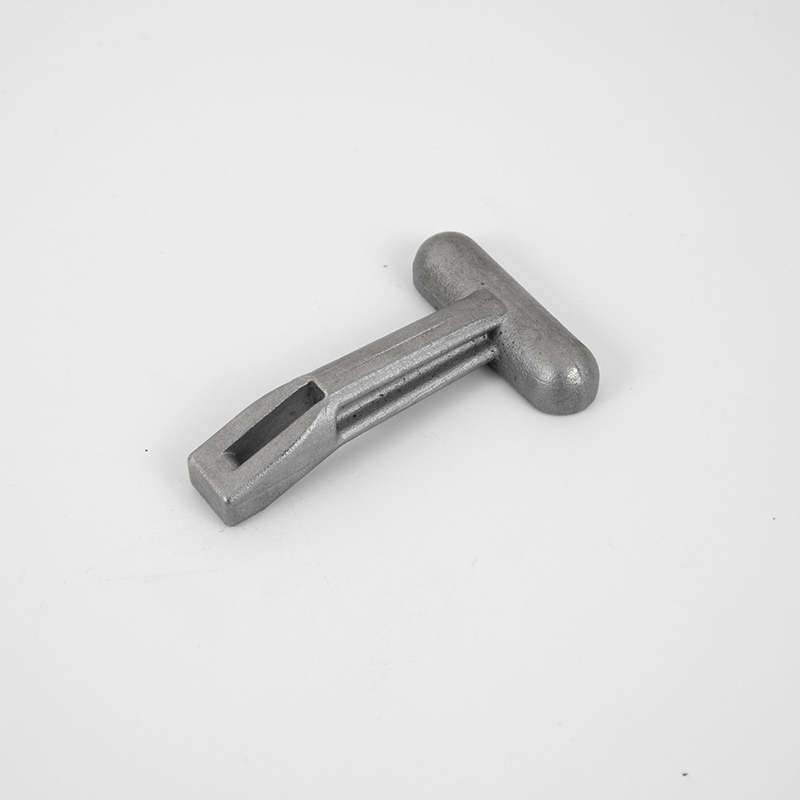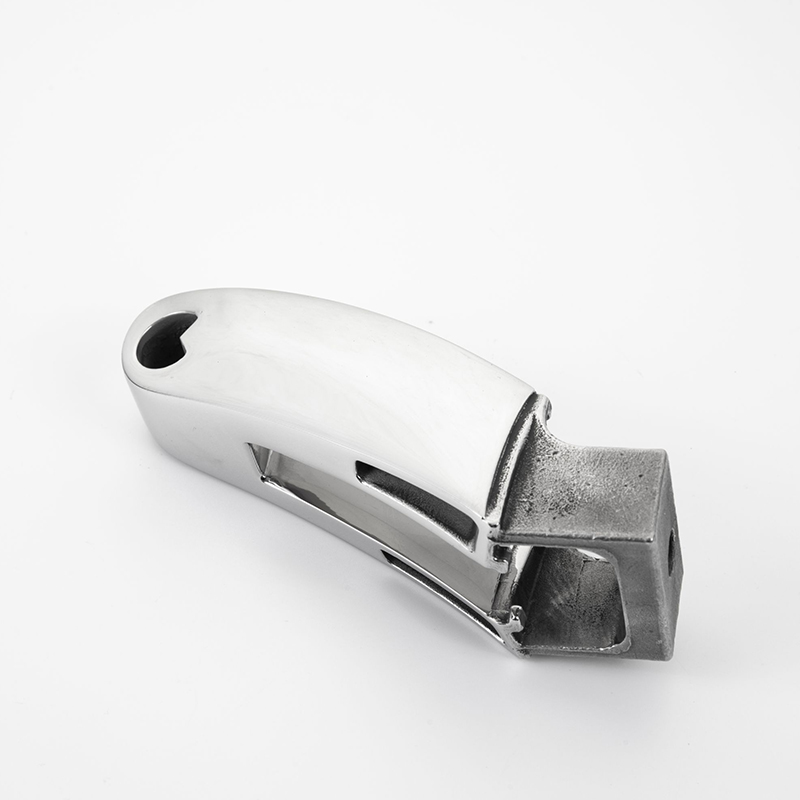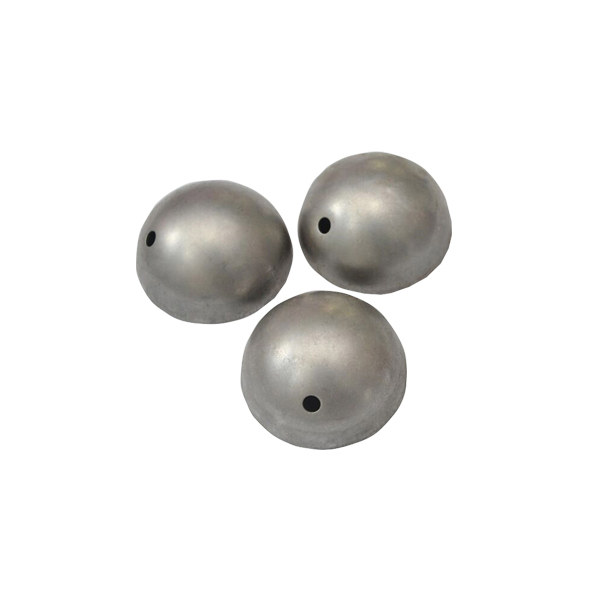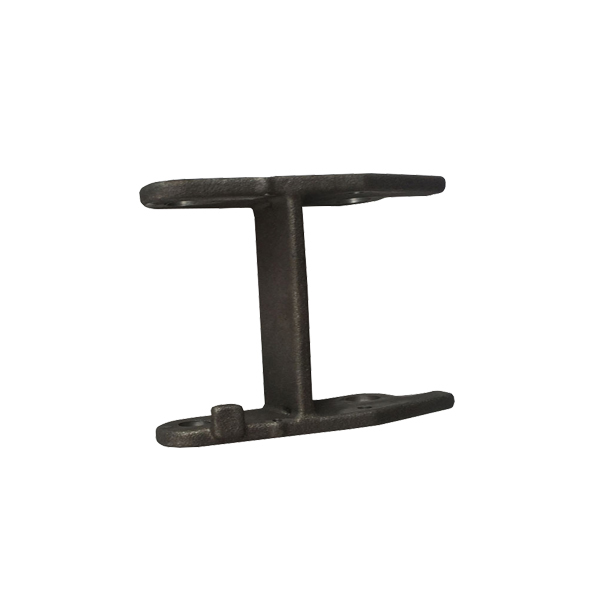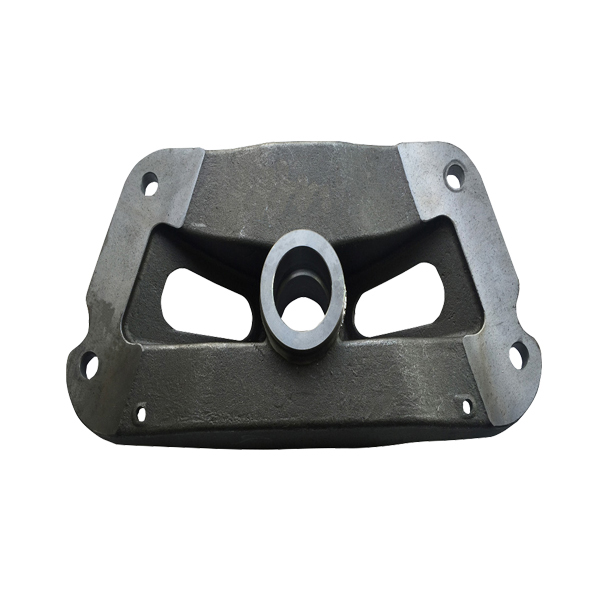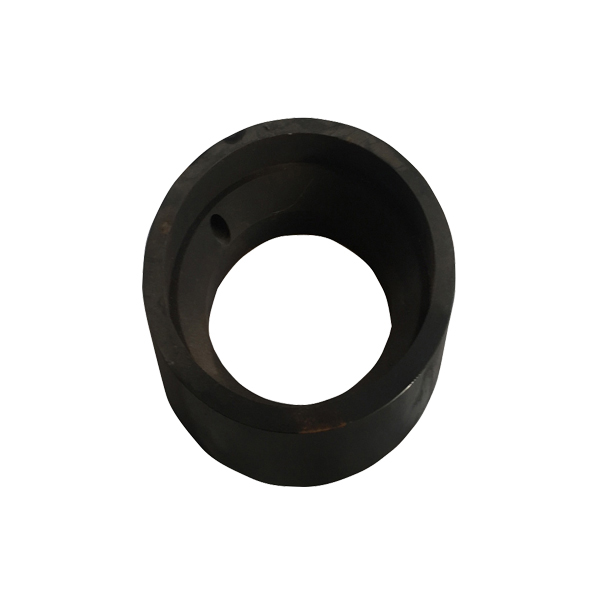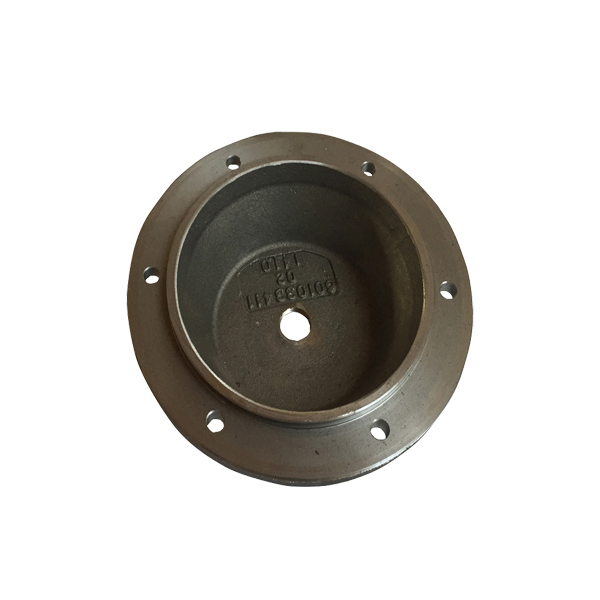Products
Carbon Steel Investment Casting
You are welcomed to come to our factory to buy the latest selling, low price, and high-quality Carbon Steel Investment Casting. We look forward to cooperating with you.Carbon steel investment casting is a manufacturing process where carbon steel is melted and poured into a ceramic mold, which has been created using the "lost wax" process. Carbon steel is a popular material due to its affordability, durability, and versatility, allowing it to be used for various applications, particularly where high strength and wear resistance are required.
Send Inquiry
Product Description
What is Carbon Steel Investment Casting?
Carbon steel investment casting is a casting process that uses carbon steel as the main component. It is a manufacturing process that involves the use of a mold created by the "lost wax" method to produce parts of complex shapes and intricate details.
The process begins with the creation of a wax pattern of the final product, which is then used to form a ceramic mold. This mold is created by repeatedly dipping the wax pattern into a ceramic slurry, followed by drying. Once the ceramic coating is thick enough, the wax inside is melted out, creating a hollow cavity that precisely matches the shape of the wax pattern.
The ceramic mold is then preheated, and molten carbon steel is poured into it. The metal is allowed to cool and solidify in the mold. The ceramic shell is then broken away to reveal the solid carbon steel part.
Once removed from the mold, the part may require additional finishing work, such as grinding or machining. The process can produce complex and intricate shapes, with tight tolerances and excellent surface finishes, making it an ideal choice for manufacturing parts for a wide range of industries.
Carbon steel investment casting is widely used in automotive, aerospace, and other industries that require high-strength parts that are resistant to wear and tear. It allows for the production of high-quality parts at a lower cost than more traditional manufacturing methods, making it an attractive option for those seeking an economically viable and efficient manufacturing solution.
The process begins with the creation of a wax pattern of the final product, which is then used to form a ceramic mold. This mold is created by repeatedly dipping the wax pattern into a ceramic slurry, followed by drying. Once the ceramic coating is thick enough, the wax inside is melted out, creating a hollow cavity that precisely matches the shape of the wax pattern.
The ceramic mold is then preheated, and molten carbon steel is poured into it. The metal is allowed to cool and solidify in the mold. The ceramic shell is then broken away to reveal the solid carbon steel part.
Once removed from the mold, the part may require additional finishing work, such as grinding or machining. The process can produce complex and intricate shapes, with tight tolerances and excellent surface finishes, making it an ideal choice for manufacturing parts for a wide range of industries.
Carbon steel investment casting is widely used in automotive, aerospace, and other industries that require high-strength parts that are resistant to wear and tear. It allows for the production of high-quality parts at a lower cost than more traditional manufacturing methods, making it an attractive option for those seeking an economically viable and efficient manufacturing solution.
Why is it Called Carbon Steel Investment Casting?
The name "steel investment casting" comes from the fact that it is a casting process in which a wax pattern is invested, or surrounded by, a ceramic shell. The word "investment" in this context originated from the Latin root "vestis," which means "garment" or "covering." Over time, this word was adapted to describe the process of covering a pattern with ceramic material before casting.
The investment casting process was first developed over 5,000 years ago in ancient Mesopotamia, where artisans used beeswax to create intricate metal objects. After this early use, the technique was lost for many centuries and then rediscovered in the late 1800s. Today, investment casting is widely used in many industries because it provides near-net-shape precision, a high-quality surface finish, and the ability to cast a wide variety of materials, including steel alloys. The term "steel investment casting" reflects the use of this process to cast parts out of steel alloys.
The investment casting process was first developed over 5,000 years ago in ancient Mesopotamia, where artisans used beeswax to create intricate metal objects. After this early use, the technique was lost for many centuries and then rediscovered in the late 1800s. Today, investment casting is widely used in many industries because it provides near-net-shape precision, a high-quality surface finish, and the ability to cast a wide variety of materials, including steel alloys. The term "steel investment casting" reflects the use of this process to cast parts out of steel alloys.
What is the Steel Investment Casting Process?
The name "carbon steel investment casting" derives from the use of carbon steel in the casting process, and the process of investment casting used to create the final product.
Carbon steel is a popular alloy of steel, containing carbon as the primary element mixed with other metals or elements such as manganese, copper, and nickel. It is known for its durability, strength, and versatility, making it widely used in various applications.
Investment casting is a process of creating metal parts by pouring molten metal into a mold, which has been produced by creating a wax pattern of the final product. The wax pattern is coated with ceramic material to create the mold so that molten metal can be poured into it.
Hence, carbon steel investment casting is so named because it uses carbon steel as the primary metal, and the process of investment casting is used to produce the final product. Carbon steel investment casting offers a great combination of versatility, strength, durability, and precision, making it useful for various applications in industries such as aerospace, automotive, energy, and medical.
Carbon steel is a popular alloy of steel, containing carbon as the primary element mixed with other metals or elements such as manganese, copper, and nickel. It is known for its durability, strength, and versatility, making it widely used in various applications.
Investment casting is a process of creating metal parts by pouring molten metal into a mold, which has been produced by creating a wax pattern of the final product. The wax pattern is coated with ceramic material to create the mold so that molten metal can be poured into it.
Hence, carbon steel investment casting is so named because it uses carbon steel as the primary metal, and the process of investment casting is used to produce the final product. Carbon steel investment casting offers a great combination of versatility, strength, durability, and precision, making it useful for various applications in industries such as aerospace, automotive, energy, and medical.
What is the Carbon Steel Investment Casting Process?
The carbon steel investment casting process is a highly precise and versatile manufacturing method for creating metal parts for various industries. Here are the steps involved in the process:
Wax Pattern Creation: The process usually starts with creating a wax pattern that matches the final product. The wax pattern is made by creating a mold designed using CAD software, and then injected into molten wax to replicate the final product.
Mold Assembly: The wax patterns are assembled to a gating system, and a sprue to create a tree-like assembly. This assembly is then dipped into a ceramic slurry, followed by coating with fine sand or ceramic powder, building up to the required thickness .
De-Waxing: After the ceramic coating has dried, it is heated, and the wax burns out of the ceramic shell, creating a mold with a hollow cavity. This process is called "lost wax."
Casting the Carbon Steel: Next, the ceramic shell is preheated, and molten carbon steel is poured into the ceramic mold. The molten steel fills the hollow cavity of the mold, taking the shape of the original wax pattern. Cooling and Removal of Ceramic Shell: The molten metal cools and solidifies, and after cooling, the ceramic shell is removed, either mechanically or by high-pressure water blasting.
Finishing: Finally, the casting is cleaned, finished, and polished as needed through grinding or machining, resulting in a high-quality component.
The carbon steel investment casting process is utilized to produce parts that demand high precision with tight tolerances, excellent surface finish, and internal complexity. Carbon steel investment casting also offers several benefits over other metal-casting methods, including versatility, cost-effectiveness, and the ability to produce complex components in high volumes while maintaining accuracy. This process is widely used for producing parts for aerospace, automotive, and medical industries, among others, where high strength, durability, and precision are crucial.
Wax Pattern Creation: The process usually starts with creating a wax pattern that matches the final product. The wax pattern is made by creating a mold designed using CAD software, and then injected into molten wax to replicate the final product.
Mold Assembly: The wax patterns are assembled to a gating system, and a sprue to create a tree-like assembly. This assembly is then dipped into a ceramic slurry, followed by coating with fine sand or ceramic powder, building up to the required thickness .
De-Waxing: After the ceramic coating has dried, it is heated, and the wax burns out of the ceramic shell, creating a mold with a hollow cavity. This process is called "lost wax."
Casting the Carbon Steel: Next, the ceramic shell is preheated, and molten carbon steel is poured into the ceramic mold. The molten steel fills the hollow cavity of the mold, taking the shape of the original wax pattern. Cooling and Removal of Ceramic Shell: The molten metal cools and solidifies, and after cooling, the ceramic shell is removed, either mechanically or by high-pressure water blasting.
Finishing: Finally, the casting is cleaned, finished, and polished as needed through grinding or machining, resulting in a high-quality component.
The carbon steel investment casting process is utilized to produce parts that demand high precision with tight tolerances, excellent surface finish, and internal complexity. Carbon steel investment casting also offers several benefits over other metal-casting methods, including versatility, cost-effectiveness, and the ability to produce complex components in high volumes while maintaining accuracy. This process is widely used for producing parts for aerospace, automotive, and medical industries, among others, where high strength, durability, and precision are crucial.
What Materials can be Carbon Steel Investment Casting?
Carbon steel investment casting is a versatile manufacturing process that can cast a wide range of materials, but the casting properties depend on the material's chemical composition upon melting. Some materials that can be used in carbon steel investment casting include:
Carbon Steel Alloys: Carbon steel investment casting can cast different carbon steel alloys with varying strength, hardness, and corrosion resistance. The most common types include low carbon and high carbon steel.
Stainless Steel Alloys: Stainless steel alloys are widely used in carbon steel investment casting for their exceptional corrosion resistance, high strength, and durability. The most commonly used include 304, 316, and 17-4 PH stainless steel alloys.
Tool Steel: Tool steels have excellent wear and heat resistance properties that make them popular for cutting tools, gears, and other mechanical components.
Nickel-based Alloys: These alloys are used in high-temperature applications for their high corrosion, oxidation, and wear resistance. Common nickel-based alloys include Monel and Inconel.
Copper alloys: Copper-based alloys are often used in investment casting because of their excellent electrical and thermal conductivity, and their good compatibility with water, making them popular for piping and other plumbing components.
The material chosen will depend on the specific application and the properties required from the final part. Carbon steel investment casting offers a versatile way to cast complex parts that demand high strength, durability, and tolerance accuracy.
Carbon Steel Alloys: Carbon steel investment casting can cast different carbon steel alloys with varying strength, hardness, and corrosion resistance. The most common types include low carbon and high carbon steel.
Stainless Steel Alloys: Stainless steel alloys are widely used in carbon steel investment casting for their exceptional corrosion resistance, high strength, and durability. The most commonly used include 304, 316, and 17-4 PH stainless steel alloys.
Tool Steel: Tool steels have excellent wear and heat resistance properties that make them popular for cutting tools, gears, and other mechanical components.
Nickel-based Alloys: These alloys are used in high-temperature applications for their high corrosion, oxidation, and wear resistance. Common nickel-based alloys include Monel and Inconel.
Copper alloys: Copper-based alloys are often used in investment casting because of their excellent electrical and thermal conductivity, and their good compatibility with water, making them popular for piping and other plumbing components.
The material chosen will depend on the specific application and the properties required from the final part. Carbon steel investment casting offers a versatile way to cast complex parts that demand high strength, durability, and tolerance accuracy.
What is Carbon Steel Investment Casting Used For?
Carbon steel investment casting is widely used in various industries where high strength, durability, and precision are required. The process is capable of producing high-quality metal parts with precise geometries, tight tolerances, and excellent surface finishes. Here are some examples of applications of carbon steel investment casting:
Aerospace: Carbon steel investment casting is used extensively in the aerospace industry to manufacture critical components for aircraft such as landing gear, wing structures, and engine parts.
Automotive: Carbon steel investment casting is used in the automotive industry to produce parts such as engine components, powertrain components, and suspension components to improve the lifespan and durability of vehicles.
Energy: Carbon steel investment casting is used to produce components required in the energy generation and exploration industry, such as turbines, turbines blades, and oil well components.
Medical: Investment casting can be used to produce medical devices, such as implants, surgical instruments, and other critical components that require excellent surface finishes, tight tolerances, and biocompatibility.
Industrial: Carbon steel investment casting is used to produce parts such as pumps, valves, fittings, and general machinery components. Carbon steel is ideal for industrial components because of its durability in harsh environmental conditions.
Carbon steel investment casting is also used in other industries such as defense, marine, and agriculture. The process is highly versatile and can be adapted to suit different industries' specific needs, with parts being produced at high volumes with consistent quality and precision.
Aerospace: Carbon steel investment casting is used extensively in the aerospace industry to manufacture critical components for aircraft such as landing gear, wing structures, and engine parts.
Automotive: Carbon steel investment casting is used in the automotive industry to produce parts such as engine components, powertrain components, and suspension components to improve the lifespan and durability of vehicles.
Energy: Carbon steel investment casting is used to produce components required in the energy generation and exploration industry, such as turbines, turbines blades, and oil well components.
Medical: Investment casting can be used to produce medical devices, such as implants, surgical instruments, and other critical components that require excellent surface finishes, tight tolerances, and biocompatibility.
Industrial: Carbon steel investment casting is used to produce parts such as pumps, valves, fittings, and general machinery components. Carbon steel is ideal for industrial components because of its durability in harsh environmental conditions.
Carbon steel investment casting is also used in other industries such as defense, marine, and agriculture. The process is highly versatile and can be adapted to suit different industries' specific needs, with parts being produced at high volumes with consistent quality and precision.
Product details
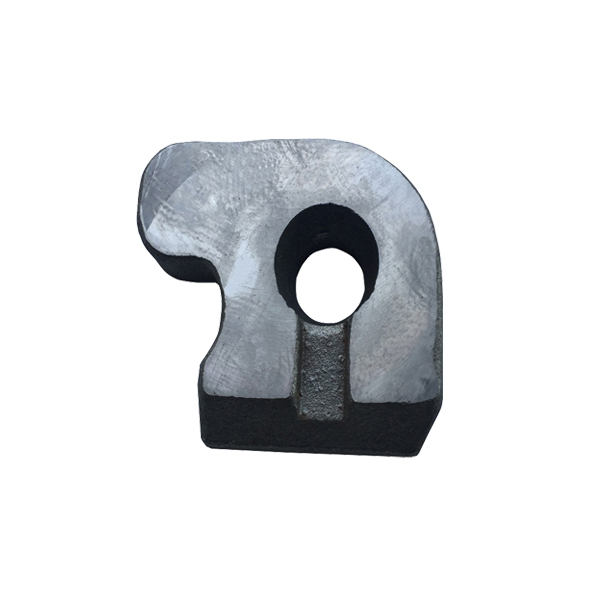
Hot Tags: Carbon Steel Investment Casting, China, Manufacturer, Supplier, Factory, Customized, Made in China
Related Category
Investment Casting
Shell Mold Sand Casting
Lost Foam Casting
Water Glass Casting
Lost Wax Casting
Die Casting
Precision Machining
CNC Machining
Turning Machining
Machining Workshop
Send Inquiry
Please Feel free to give your inquiry in the form below. We will reply you in 24 hours.
